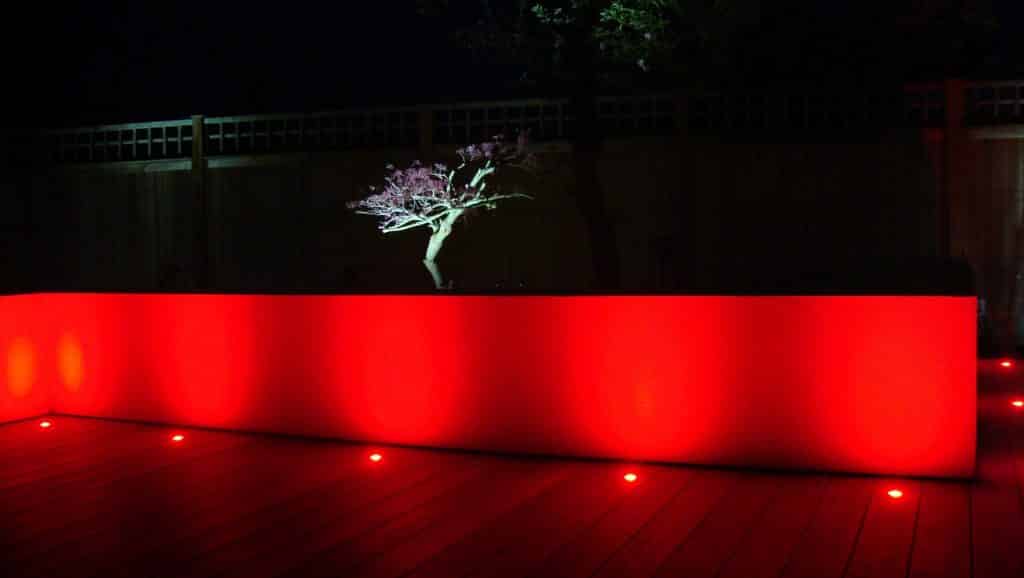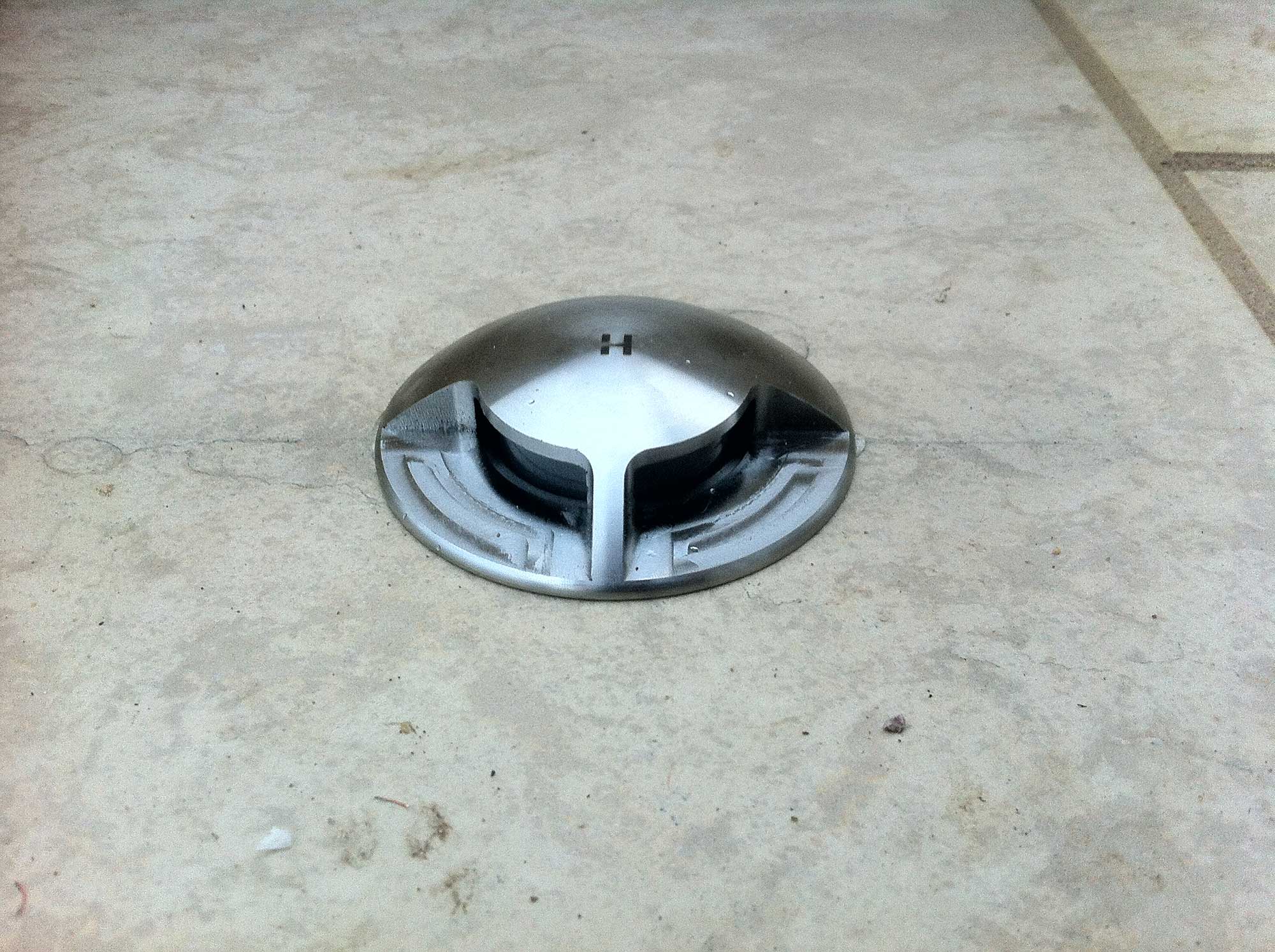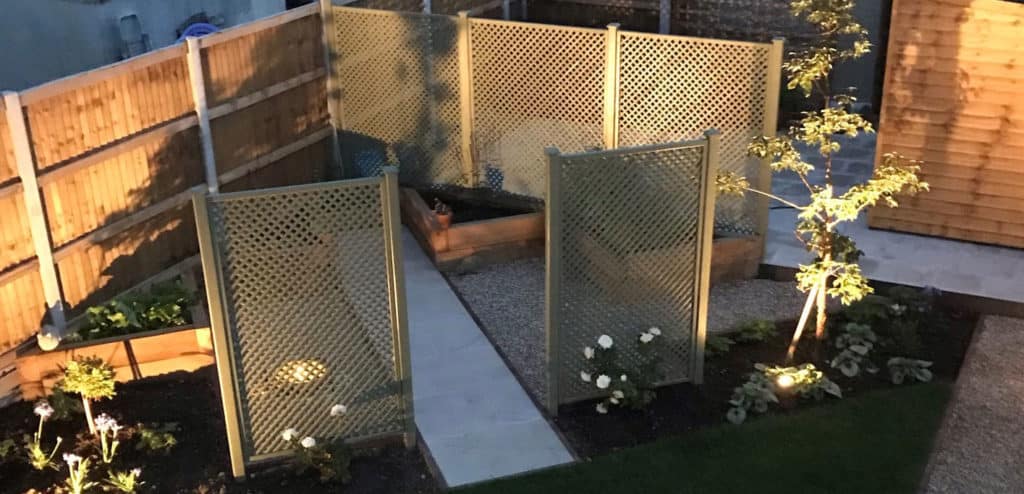23 Feb How To Plan Garden Lighting
Any landscaping project needs a step by step approach and deciding how to plan garden lighting is no exception. Whether the lighting plan is part of a complete garden makeover or simply an improvement to your existing patio or pergola, the approach is the same.
When you plan garden lighting, there’s a lot to think about. From fittings and fixtures to positioning the the transformers and control box and of course, deciding where the cables will run and how they will be protected from damage. So lets start at the beginning —-the first part of the planning process.
Careful planning ensures that you get maximum value from your garden lighting
How To Design Garden Lighting Step 1 – Determining Function
To make sure that your garden lighting is fit for purpose – first you need to decide what that purpose is. Write yourself a detailed list….something like this…
- I would like to be able to walk from my driveway to my back door without stumbling in the dark.
- If the dog needs a wee before bedtime, I want to be able to keep sight of him or her without using a torch.
- We love entertaining, it would be good to have some soft ambient lighting around our outdoor dining area.
- The view from our patio doors after dark is quite oppressive, I’d like to highlight garden features to give us something interesting to look at.
- I’m not confident negotiating the patio steps in the dark – I need lighting to make me feel safer
- Lighting in and around the fish pond would be an awesome feature to have in my garden.
- Our garden has limited interest in the darker months, I want to create a winter wonderland that also encourages us to use the garden on summer evenings.
Step 2 – Deciding What To Light Up
The next part of the process is deciding which garden features to light up. When I plan garden lighting I start by looking at what is existing in the garden. Trees, water features etc. Up-lighting an old tree in the garden is very simple but can have dramatic effects, so it is well worth considering existing features first.
After I have decided which existing features to consider for lighting I then look at the design of the garden we are building. Paying particular attention to…
- Trees that will be planted
- Steps that could be a trip hazard in the dark
- Any new features in the garden (water features, sculptures, structures etc)
- Planting that will look good illuminated
- Any patio areas that might need lighting for outdoor dining or entertaining
- Outdoor kitchen areas that need to be lit for safer cooking
One very important thing to remember as you plan garden lighting is not to have too many lights. Lighting needs to be subtle and create a nice ambience within the garden. If you add to many lights you could end up disturbing neighbours and a risk your outdoor spaces looking like Disney Land!

The colour of these patio lights can be controlled from a phone app. Changing from red to blue or even green can alter the mood of the garden.
Step 3 – Choosing And Positioning Light Fittings
Once I have considered all the possible options for where lighting could be positioned, I then decide which light fitting will work best in each place.
There are so many different effects that can be created with garden lighting so choosing the right fitting is crucial. Will you want coloured filters? Uplighting? Downlighting? Recessed lights? Festoon Lights? I will talk more about the different fittings available in my next lighting blog.
Sep 4 – Zoning The Lights And Planning The Cabling
Next I decide how the lights will be zoned. For example, rather than illuminate the whole garden at once, I could choose to turn on all of the patio lights but make the tree lights optional. Or the lights for the paths and steps could come on when you switch on the hot tub illuminations but the outdoor cooking area could have its own switch.
When I know which fitting will go where, I turn my attention to where the cables are going to run. Cables need to be carefully positioned so they don’t take focus away from other garden features. Neither must they be at risk of being damaged during routine garden maintenance.
As well as cables, I need to think where I am going to hide the controller (the box that your remote control talks to) and the transformers (the power source). Ideally, these will be tucked away somewhere out of sight but still accessible. Maybe round the back of a shed or garage.
The law says that connecting the lights to the power source is a job for a qualified electrician. And rightly so! However, your sparky will need to know where all of the crucial components are to be placed.
Click here to discover more about garden lighting fittings.
Using Garden lighting to add a whole new dimension to your garden – some incredible images to inspire you.





No Comments